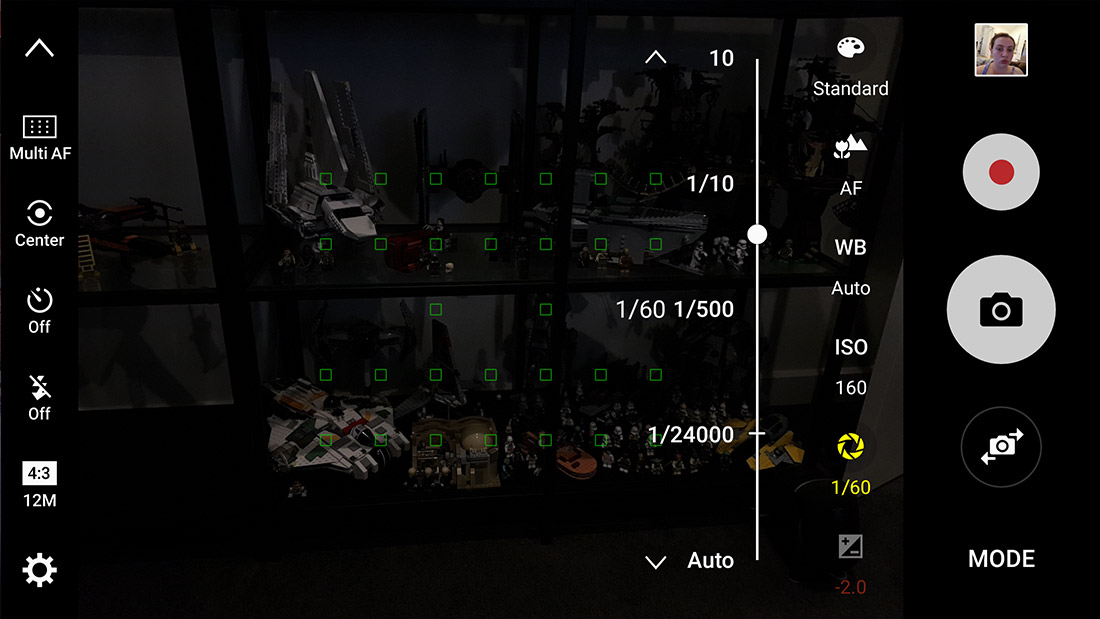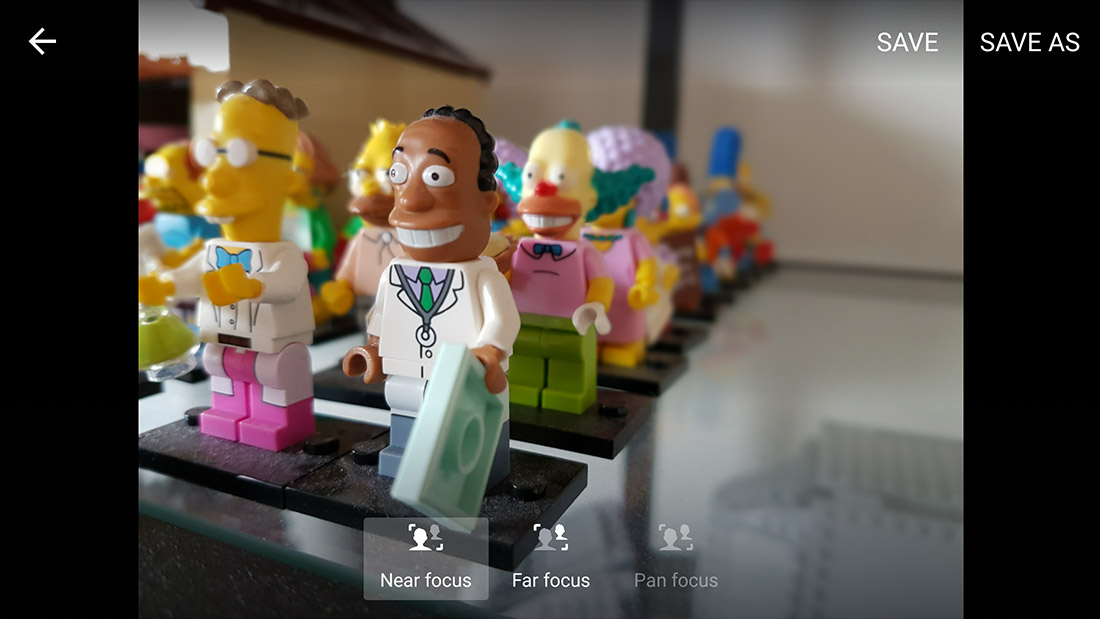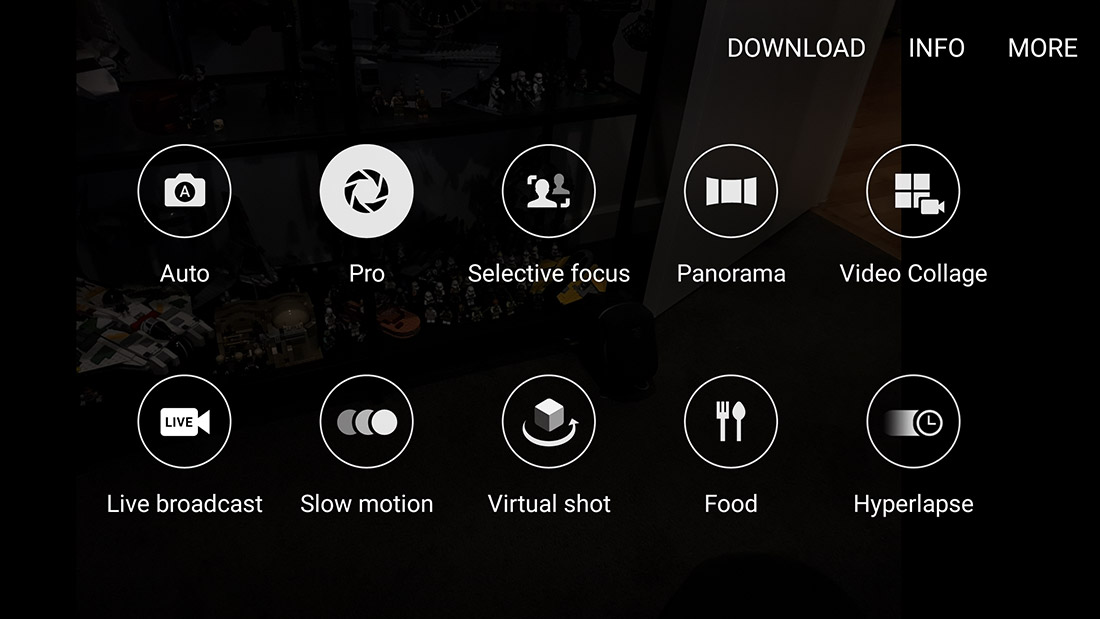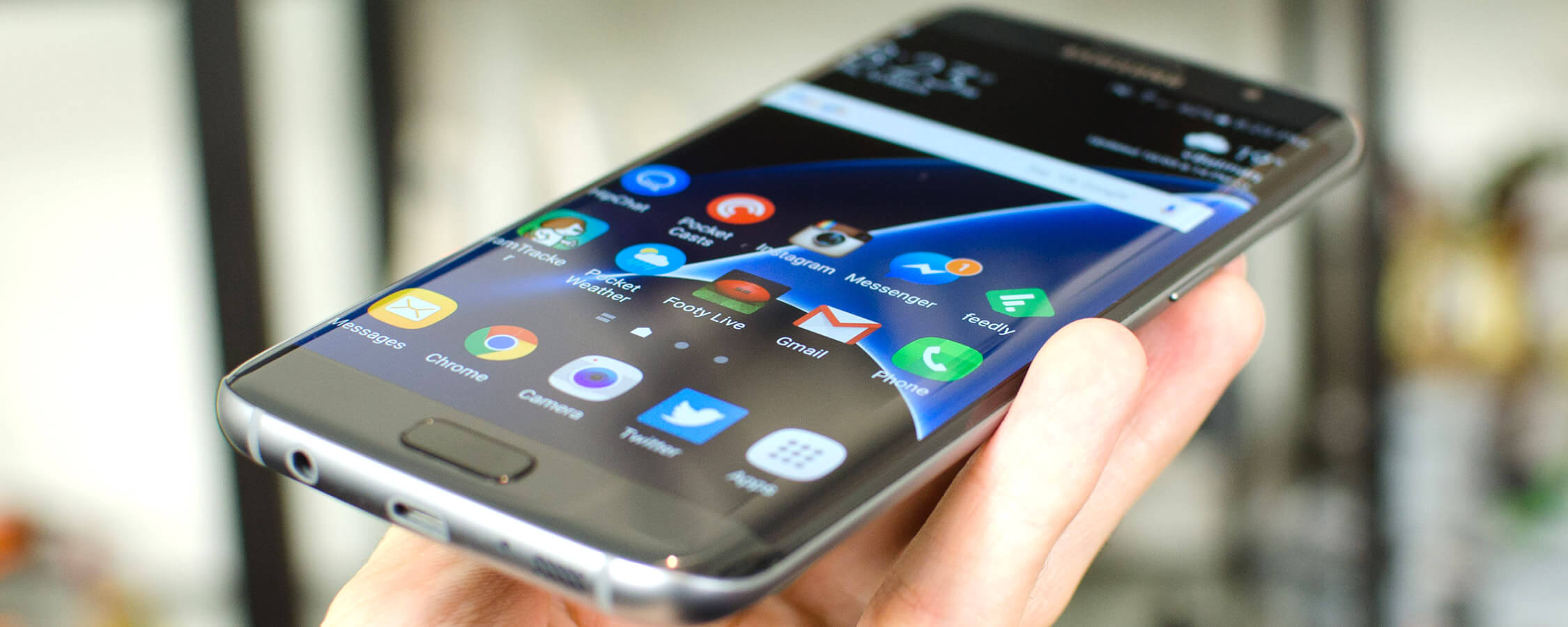Camera Features and Video Quality
The S7's camera is equipped with a lot of features, and the most important one to highlight is the full manual mode. This mode is fantastic for people like me that want greater control over how the camera performs (even if the auto mode is excellent), and it can be particularly useful if you want to increase the shutter speed for capturing fast-moving objects.
In the manual (Pro) mode, you have full control over shutter speed, ISO, white balance, and focus. There's also the ability to change the general tone of images to a collection of standard filters, such as vivid or soft, and there are settings for auto-focus mode (multi or center) and metering mode (center, matrix, or spot). You can even save RAW images from within Pro mode for greater control while editing.

In the settings menu for both auto and pro modes you can enable two compelling features: tracking autofocus, which allows you to tap on an object that's then tracked as it moves around the screen (very useful for fast-moving objects); and motion photo, that records a short video before the shutter button is pressed for every image. To me, motion photo isn't hugely useful, but I'm sure some people will find the feature useful to ensure the perfect moment is captured.

Selective Focus is a feature we've seen before that takes and combines multiple images, allowing you to adjust the focus after the image is taken. This mode seems refined on the Galaxy S7 Edge, and worked well throughout my testing. There's also a food mode, which highlights dishes in the center of frame, a standard panorama mode, and the ability to download more modes, including one that makes GIFs, via Samsung Apps.

The Galaxy S7's 4K video recording quality (48 Mbps H.264) is excellent, and you get the same fantastic image quality and focus speeds as when taking stills. Adjustments in metering are extremely quick, and when the focus motor kicks into gear, adjusting focus on the fly is lighting fast. Thanks to OIS you're also getting smooth motion while panning, although the system isn't strong enough to overcome shakes and bumps while walking.
As for audio quality (256 kbps stereo), that's also very good when recording video, and in a couple of test videos I took my voice was always clear while holding the camera. At night, the image quality noticeably worsened, with a significant increase in grain, although that's to be expected.
There are a number of video features that accompany the standard video recording modes. Two of the more basic ones are 1080p recording at 60 FPS, delivering smooth motion that's great for fast-moving objects. There's also a slow motion mode, which records 720p, 60 Mbps H.264 footage at 240 frames per second, delivering 1/8th speed playback when viewed at 30 FPS.
For other video modes you get Hyperlapse, which creates smooth time lapse style footage; Video Collage, which takes four six second clips and arranges them in a looping 2x2 grid; Live Broadcast, which records and streams directly to YouTube; and Virtual Shot, which essentially takes a video as you move around objects in a poor attempt to create a 3D effect.
